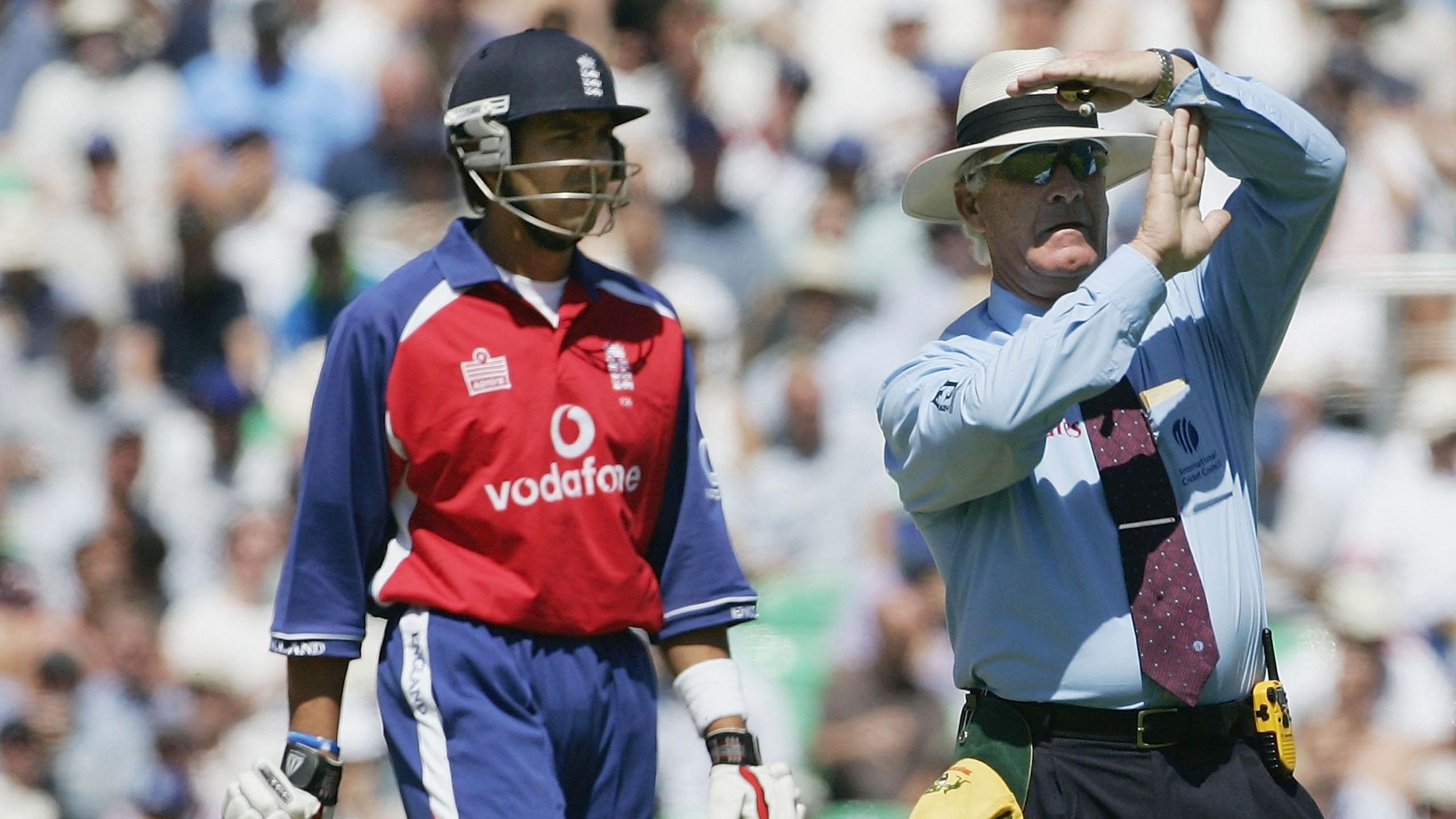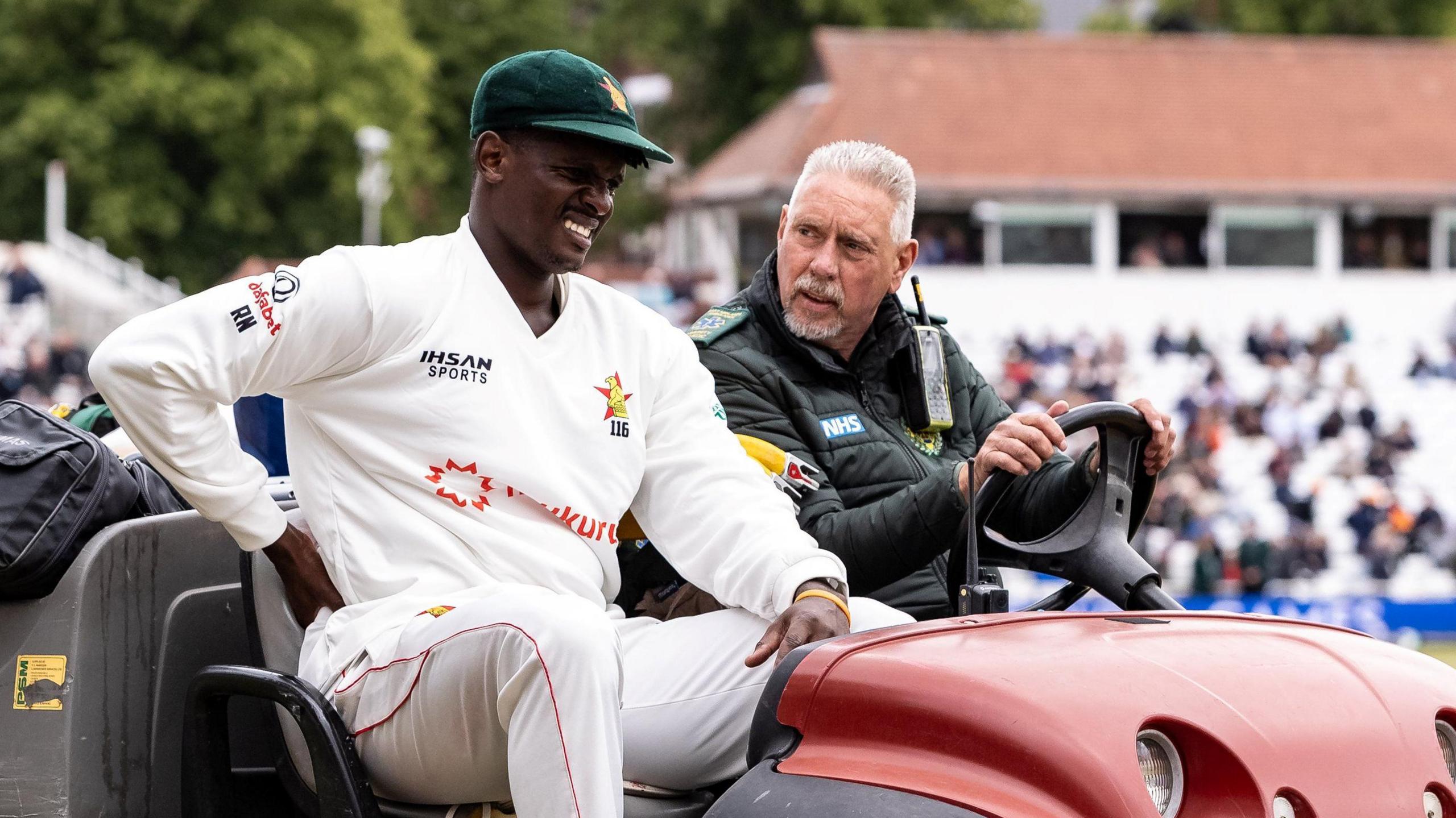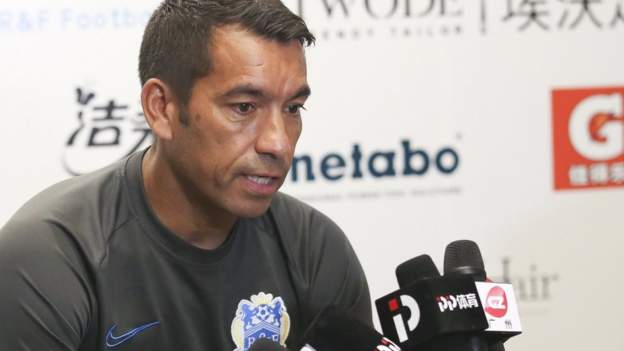ARTICLE AD BOX
Zimbabwe down a bowler after Ngarava carted off with hamstring injury
Matthew Henry
BBC Sport journalist
Is it time for cricket to make a change and allow teams to replace injured players?
Zimbabwe were already struggling on day one of the one-off Test against England at Trent Bridge when frontline bowler Richard Ngarava had to be helped from the field with a back injury.
That left the tourists potentially a bowler and batter short - effectively playing with 10 men because while an injured player can be replaced in the field, the replacement cannot bat or bowl.
Ngarava briefly returned to field later in the day but was unable to bowl because of how long he had spent off the field, and looked in discomfort before once again heading for the changing rooms.
BBC Sport looks at the current laws, when cricket has dabbled with substitutes in the past and asks the Test Match Special team whether it is time for subs to be brought in...
What do the Laws of Cricket say?
Cricket's Laws, set out by the Marylebone Cricket Club (MCC), state the umpires can allow a substitute if a player "has been injured or become ill and that this occurred during the match" or for "any other wholly acceptable reason".
"A substitute shall not bowl or act as captain but may act as wicketkeeper only with the consent of the umpires," the Law adds.
The exception comes if a player suffers a concussion.
Replacements for concussion have been allowed since 2019 - Australia's Marnus Labuschagne famously became the first concussion sub in Test cricket when replacing Steve Smith in the Ashes - and are able to bat and bowl.
Covid-19 replacements were brought in after the pandemic but have since been scrapped.
How often have injuries impacted matches?
There are numerous occasions when injuries have impacted matches.
England effectively played the entire first Test of the 2019 Ashes at Edgbaston with 10 players after James Anderson injured his calf four overs into day one.
In 2023, Australia spinner Nathan Lyon limped out of the second Test at Lord's on day two with a calf injury.
There have been famous examples of players battling on through injury which has added to the spectacle.
Colin Cowdrey batted with a broken arm in saving a Test for England against West Indies in 1963, while South Africa captain Graeme Smith bravely emerged with a broken hand in an attempt to save the Sydney Test against Australia in 2009.
When has cricket used substitutes?
 Image source, Getty Images
Image source, Getty Images
Vikram Solanki became the first supersub in one-day cricket for England against Australia in 2005
Substitutes are not totally unheard of in cricket.
Supersubs were introduced to one-day internationals in 2005 – England's Vikram Solanki was the first in a match at Headingley against Australia – but were scrapped in 2006.
The Indian Premier League currently has its impact player rule which allows teams to swap in one of four named substitutes during a match, while Australia's Big Bash had a similar X-Factor player rule between 2020 and 2022.
Those rules were all largely for tactical purposes, however, rather than injury, and were in T20 cricket not the longest format.
What do the experts think?
Former England captain Michael Vaughan
Injury replacements should be permitted in Test cricket in the first innings of the game. There should be an independent doctor on site. If the doctor deems a player unable to carry on playing, you should be allowed a sub.
It should only be in the first innings. If you allow it to go into the second innings, there could be a little bit of skullduggery. If there's a genuine injury in the first innings, it affects the game and the entertainment, which fans pay money to watch. The first innings is a good cut-off to make it fair.
BBC chief cricket commentator and former England bowler Jonathan Agnew
I have seen a number of Tests ruined because a team is a player down. How do you prove it? It's another example of where there could be argument. It is something that is so difficult to prove.
Common sense says yes, of course, but you need a satisfactory way of showing beyond doubt that the player is genuinely injured. I think that would be open to all sorts of arguments.
Former England off-spinner Vic Marks
It's well worth considering. It would take a bit of administrating, just to make sure the injury is absolutely genuine. You wouldn't want to see anyone have the opportunity to fake injuries in order to change the nature of a team because of conditions or lack of form.
We had it in rugby where fake blood was spilt, so we want to avoid that. You need that proviso to make sure the system isn't abused, but it is something that should be examined.
Former Zimbabwe seamer Henry Olonga
I'm open to the idea of substitutes, perhaps with a limited number, but not necessarily like-for-like and not only restricted to injuries. If you want to grow the game globally, then make it more like other sports where subs are allowed.
Think of football, tactically if a game is going in a certain way, substitutes can be used to tweak the direction. If a fast bowler is going for a few runs, why not replace them with a spinner? I don't think it will be a popular opinion, but I am sticking to it.
TMS commentator Alison Mitchell
Yes, it should be looked into, but someone has to come up with a system where the system cannot be abused. We already have like-for-like substitutes if a player is concussed, so surely it should be brought in for other injuries.
Otherwise, you can end up with the situation like we may have with Zimbabwe in this Test. Then it just makes it a one-sided contest. If an injured player can't take any further part in a match, we have to find a way of keeping the contest going.
 Image source, Getty Images
Image source, Getty Images
TMS commentator Simon Mann
I've long thought it is an anomaly that you can't have a substitution in Test cricket. Every other sport has it. Why not in cricket?
I can understand the problem of verifying an injury, but perhaps a halfway house would be to permit a replacement for a clearly injured player in the first two days of a Test.
BBC Sport chief cricket reporter Stephan Shemilt
As plenty have highlighted, any idea of injury replacements comes with the potential for the system to be abused. Therefore, I don't think there can be a halfway house. If a replacement is permitted, then allow them for tactical reasons, too.
I'd say that a 12th player can be named before the toss and that player can be introduced for tactical reasons or an injury. Just one, though. That would add a layer of intrigue. What sort of player do you pick? When do you use them? If you make a tactical move, you leave yourself exposed to an injury later on. Can a team correctly assess the conditions in order to tactically maximise the introduction of the replacement?
One of the great beauties of cricket is 11 in a team is never enough. You almost always want to squeeze another batter or bowler in there. To me, simply allowing injury replacements will lead to problems down the road. Either allow a replacement for all reasons, or not at all.

 4 hours ago
4
4 hours ago
4








 English (US) ·
English (US) ·